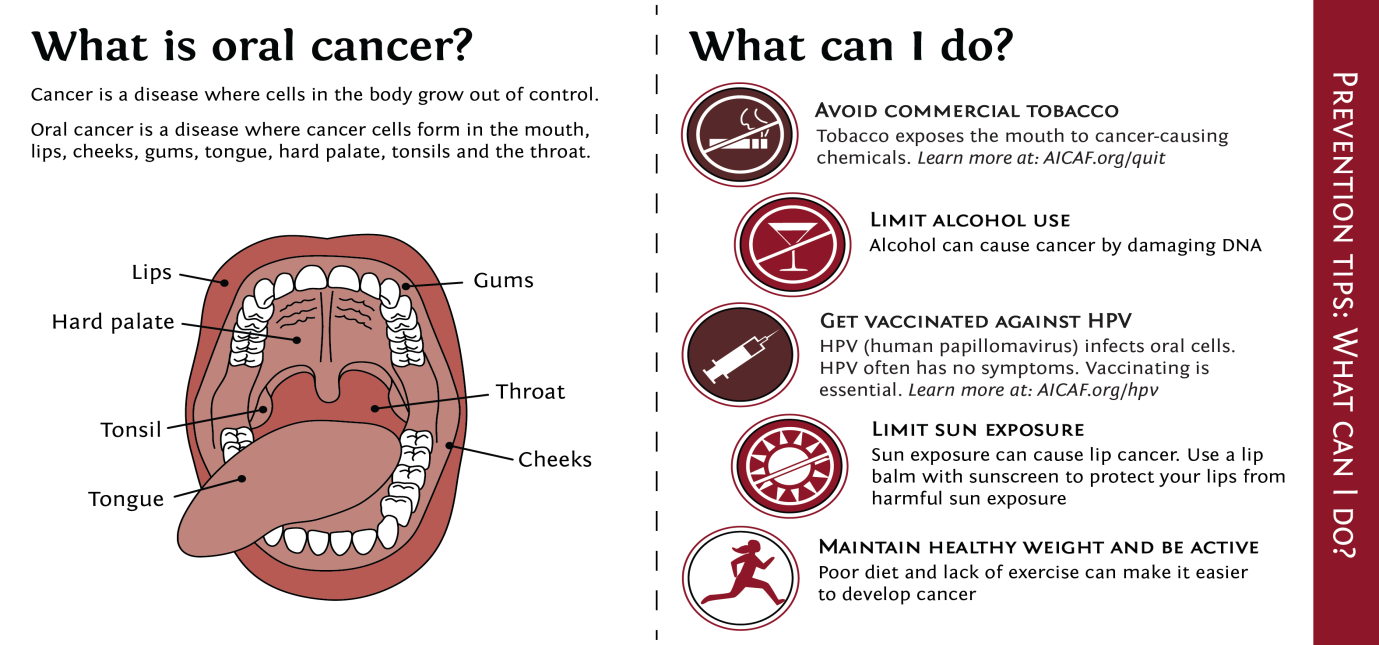-
Call Us Today
+91 868 649 1122
-
location
Telangana
ORAL CANCER SCREENING
An oral cancer screening is a visual and physical examination of the oral depression and associated tissues. It can visualize a patient that there are no clear issues, or trigger early treatment if there are. A doctor or dental specialist may propose screening in response to one's way of life decisions, or the patient may demand it essentially as a careful step.
The objective of oral cancer growth screening is to recognize mouth cancer early, whenever there is a more prominent possibility for a cure.

WHEN DOES ONE NEED ORAL CANCER SCREENING?
The objective of oral cancer screening is to recognize mouth disease or precancerous injuries that may prompt mouth cancer growth at a beginning time — when cancer growth or sores are least demanding to evacuate and well on the way to be restored.
Individuals with a high danger of oral cancer growth might be bound to profit by oral disease screening, however, examines haven't demonstrated that. Variables that can build the danger of oral cancer growth include:
Tobacco utilization of any type, including cigarettes, pipes, biting tobacco and snuff, among others
Heavy alcohol use
The past oral cancer finding
History of critical sun exposure, which builds the risk of lip cancer
WHAT IS THE PROCEDURE OF ORAL CANCER SCREENING?
1. Visual Exam
The face, neck, lips, within the nose and oral cavity are for the most parts of screening for oral cancer. Before the screening, the patient must take out all removable dental machines to uncover each area.

2. Physical examination
After or during the visual test, the specialist or dental specialist additionally touches the head and cheeks, around the jaw, under the jaw and in the oral hole to feel for strange nodules or masses. Another indication of a potential issue is immobility in typical tissue, and the patient might be asked whether physical contact there brings about any inconvenience. Oral cancer symptoms can be painful; however, an effortless growing can even now be an indication of issues somewhere else. The patient may likewise be approached to swallow while the throat is inspected.
FREQUENTLY ASKED QUESTIONS:
Who is recommended for oral cancer screenings?
High-risk people are especially suggested for oral cancer screenings, for example, those with a current or previous history of heavy tobacco (smoking and biting) and additionally liquor use. A mouth sore or a knot that doesn't recuperate or disappear, relentless sore throat or inconvenience gulping, steady ear pain, or a neck mass.
What potential issues can a screening identify?
It can recognize both pre-malignant (before it becomes disease) and harmful (malignant growth) spots in the mouth and throat.
Can you be able to educate us regarding the screening cycle?
We outwardly analyse your mouth and back of your throat with a light source, regularly utilizing a tongue depressor varying to assist us with survey certain structures. We look at the lips, tongue, floor of the mouth, within your cheeks, top of the mouth, gums and teeth, tonsils, back of your throat, and neck.
How long does a screening typically take?
It is quick, generally enduring close to 5-10 minutes.
What can raise worries during a screening?
We search for any stained spots or fixes, ulcers, or open injuries, just as asymmetry of your tonsils. We additionally feel with our fingers for any irregularities or knocks that are not outwardly obvious in various surfaces of your mouth and throat. At long last, we feel your neck to search for any expanded lymph hubs or neck masses.

For what reason do you accept oral cancer growth screenings are so significant?
The prior oral cancer growth is recognized and treated, the better the guess with treatment. Oral cancer growth screenings can help with this early distinguishing proof, particularly in high-risk patients.
